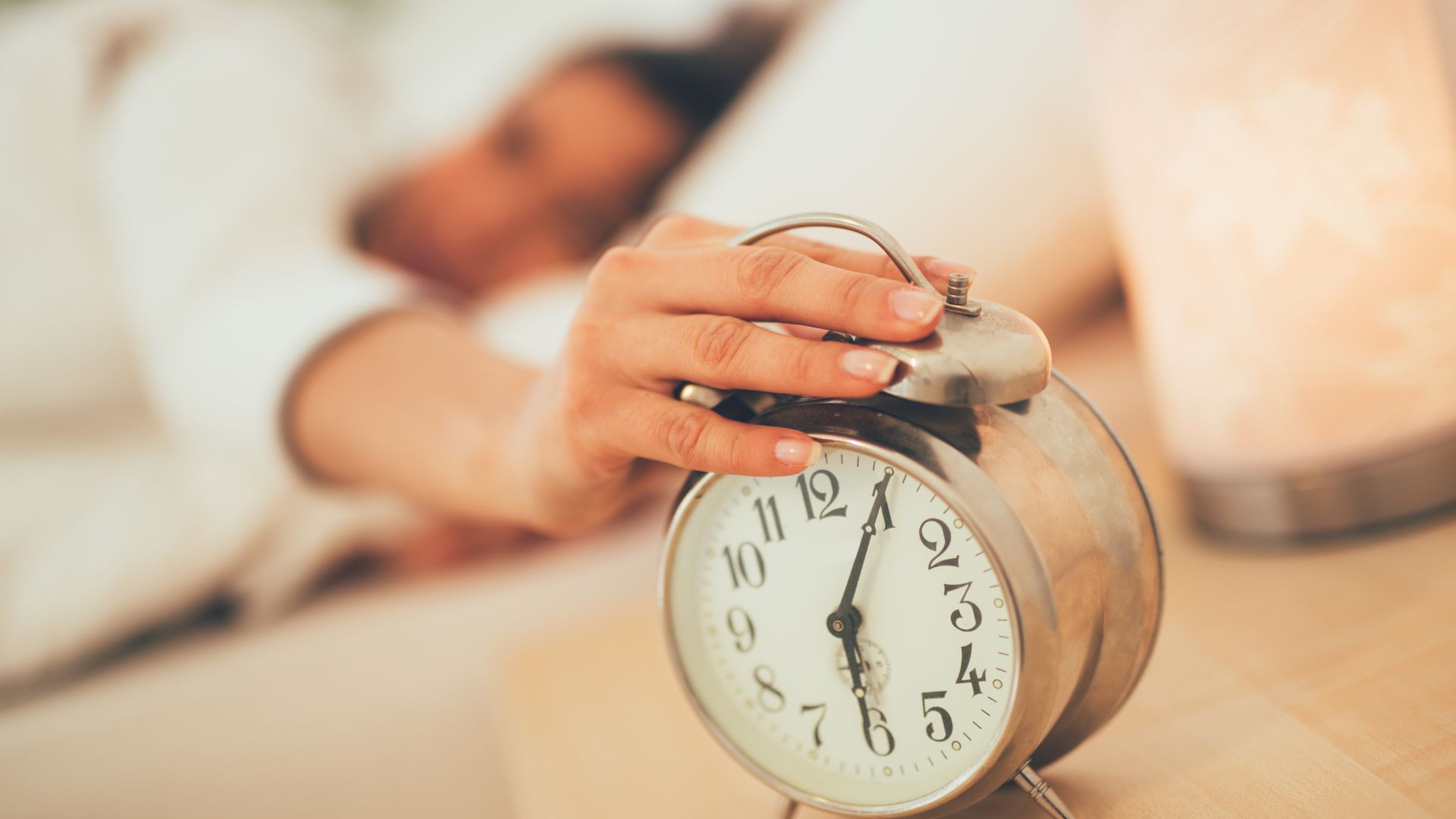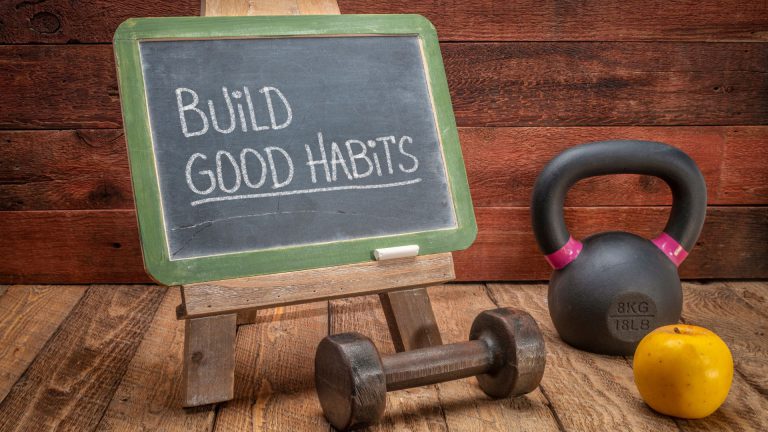Waking up earlier and establishing a healthy morning routine can have a transformative impact on your life. By starting your day with intention and purpose, you can set a positive tone that can resonate throughout the day. This habit can provide you with valuable time for self-care, exercise, reflection, and goal setting, leading to increased productivity and overall well-being.
Embracing the quiet hours of the morning can give you a sense of control over your day, reduce stress, and enhance mental clarity. Ultimately, incorporating early mornings and a healthy routine can empower you to seize the day and make the most out of every moment.
To succeed in the morning, we have to first conquer the previous evening and get the sleep required to have a good morning.
Step 1: Evaluate Your Current Sleep Routine and Set a Goal
Take a good look at when you go to bed and when you wake up. Set a goal for your new wake-up time that allows for plenty of rest. Consider how many hours of sleep you need to feel your best; this may vary for everyone. Once you have an idea of your ideal wake-up time, you can start making adjustments to your bedtime.
Tailor your bedtime routine to suit your personal preferences and needs. What works for one person may not work for another, so feel free to experiment and find what helps you relax and unwind before bed. Your routine should be personalized to fit your unique lifestyle and preferences.
Introduce Changes Slowly:
If you’re trying to establish a new bedtime routine, introduce changes gradually. Start by making small adjustments to your current routine and gradually add or remove activities as needed. This can help make the transition smoother and increase the likelihood of sticking to your new routine long-term.
Step 2: Create a Bedtime Routine:
Having a consistent bedtime routine can help improve your sleep quality. It signals to your body and mind that it’s time to wind down and prepare for rest. By following the same process each night before bed, you create a sense of predictability that can help relax you and make falling asleep easier.
Set a Time to Go to Bed:
Establish a specific time for your bedtime routine to start each night. This helps regulate your body’s internal clock, making it easier to fall asleep at the same time each night. Choose a time that allows you to get the recommended amount of sleep for your age group.
Consistency is essential when establishing a bedtime routine. Try to follow the same steps at the same time each night to help train your body and mind to recognize when it’s time to sleep.
Prepare by Winding Down:
Start by engaging in calming activities before bed. This could include reading a book, taking a warm bath, or practicing relaxation techniques. Avoid stimulating activities like watching TV or using electronic devices that emit blue light, as these can interfere with your body’s natural sleep-wake cycle. Steer clear of caffeine, heavy meals, and electronic devices at least an hour before bedtime.
Monitor and Adjust as Needed:
Pay attention to how your bedtime routine impacts your sleep quality and overall well-being. If you find that certain activities are not helping you relax or prepare for sleep, consider making adjustments. Experiment with different activities and timings to find what works best for you.
Step 3: Create an Inviting Sleep Environment
The Bed Matters
When it comes to getting a good night’s sleep, the bed you sleep on is super important. Your bed should be comfortable and supportive. Make sure your mattress is in good condition and provides the right amount of firmness or softness you prefer. Equally important is the bedding – clean, soft sheets and pillows can make a big difference in how well you sleep.
Keep It Dark and Quiet
For a restful sleep, your bedroom should be a sanctuary of darkness and peace. Invest in blackout curtains to keep out unwanted light, and consider earplugs or a white noise machine if noise is an issue. These simple adjustments can help create a calming environment that promotes deep, uninterrupted sleep.
Temperature Control
Maintaining the right temperature in your bedroom is key to a good night’s rest. Experts recommend keeping the room on the cooler side, around 60-67°F (15-19°C). Experiment with different bedding options to find what works best for you to ensure you stay comfortably warm throughout the night.
Declutter and Organize
A cluttered bedroom can lead to a cluttered mind, making it harder to relax and fall asleep. Keep your sleep environment tidy by decluttering regularly. Find storage solutions that work for you, whether that’s under-bed storage containers or a simple bedside table. Simplifying your bedroom decor can help create a more calming atmosphere.
Mindful Lighting Choices
Lighting plays a crucial role in setting the mood for sleep. Avoid harsh overhead lights in the evening and opt for softer, warmer light sources instead. Consider using dimmable lights or lamps with adjustable brightness to create a calming ambiance before bedtime. A gentle bedside lamp can be a perfect addition for late-night reading or relaxing.
Personalize Your Space
Make your bedroom a place you look forward to spending time in by adding personal touches. Choose decor that brings you joy, whether it’s soothing artwork, plants, or sentimental items. A room that reflects your personality and interests can help create a sense of comfort and security, making it easier to unwind at the end of the day.
Consider Aromatherapy
Aromatherapy can be a powerful tool for promoting relaxation and improving sleep quality. Experiment with soothing scents like lavender, chamomile, or eucalyptus to create a calming atmosphere in your bedroom. You can use essential oil diffusers, linen sprays, or scented candles to introduce these fragrances into your sleep environment.
Sleep Supplements
Sleep aid supplements are a popular choice for those seeking to improve their sleep quality. These supplements typically contain natural ingredients like melatonin, valerian root, lavender, or chamomile, known for their calming and sleep-inducing properties.
By promoting relaxation and helping regulate sleep patterns, sleep aid supplements offer a non-invasive approach to combating insomnia and other sleep disturbances. While they can be effective for many individuals struggling with sleep issues, it’s important to consult with a healthcare professional before incorporating them into your routine to ensure they are safe and suitable for your specific needs.
Now that the alarm has gone off, here’s how to get your day started off on the right foot…
Step 5: Natural Light Exposure
Natural light exposure influences your body’s production of melatonin, the hormone that regulates your sleep-wake cycle. By getting natural light early in the day, you can signal to your body that it’s time to wake up and start your day.
Incorporating Natural Light into Your Morning Routine
Make it a habit to open your curtains or go outside for a few minutes in the morning. This simple step can help kickstart your body’s natural response to daylight, setting you up for a more energetic and focused day.
Benefits of Morning Sunshine
Basking in the morning sun helps regulate your internal clock and boosts your mood and productivity. The warmth of the sun and the natural light can invigorate your senses and enhance your overall well-being.
Making Natural Light a Priority
Prioritize natural light exposure as part of your morning routine to benefit from its positive effects on your internal clock and overall well-being. By consciously seeking out natural light soon after waking up, you can establish a healthy rhythm that aligns with your body’s natural cycles.
Step 6: A Successful Morning Routine
The Importance of a Morning Routine
Waking up and starting the day consistently can set the tone for how the rest of your day unfolds. A morning routine can help you feel prepared, organized, and ready to tackle the day’s challenges. It’s like laying a strong foundation for a house – it provides stability and structure.
Start with Small Steps
Building a successful morning routine doesn’t happen overnight. It’s important to start small and gradually incorporate new habits into your morning. Begin by waking up at the same time every day, even on weekends. This helps regulate your body’s internal clock and can improve the quality of your sleep.
Eliminate Decision-Making
To make your mornings smoother, try to eliminate unnecessary decisions. Lay out your clothes, prepare your breakfast the night before, and organize your workspace. By removing these small decisions, you free up mental space for more important tasks throughout the day.
Hydration and Movement
After waking up, it’s essential to hydrate your body. Drinking a glass of water first thing in the morning can kickstart your metabolism and help you feel more awake. Incorporating some light stretching or a short exercise routine can also invigorate your body and mind, preparing you for the day ahead.
Mindfulness and Gratitude Practice
Taking a few minutes for mindfulness or gratitude practice can shift your mindset positively. Whether it’s journaling about things you’re grateful for or simply taking a moment to enjoy your morning coffee without distractions, these practices can cultivate a sense of calm and gratitude that can stay with you throughout the day.
Prioritize Important Tasks
Identify the most important tasks for the day and prioritize them in your morning routine. Whether it’s completing a work assignment, exercising, or spending quality time with your family, make sure these tasks have a dedicated space in your morning schedule. By tackling essential tasks early, you set yourself up for a productive day.
Take Breaks When Needed
While establishing a consistent morning routine is important, it’s equally crucial to listen to your body and mind. If you’re feeling overwhelmed or exhausted, allow yourself to take short breaks throughout the morning. A quick walk outside, a moment of deep breathing, or simply sitting quietly can help you recharge and refocus.
Reflect and Adjust
Regularly reflecting on your morning routine is key to its long-term success. Take note of what aspects are working well and what could be improved. Maybe you need to adjust your wake-up time, add a new activity, or remove something that isn’t serving you. Stay flexible and willing to make changes as needed to create a routine that truly works for you
By following these steps and incorporating them into your daily habits, you can become an early riser and reap the benefits of a productive and energized start to your day.
Rise and Shine 14-Day Challenge
Day 1-3: Establishing the Routine
- Day 1: Set your wake-up time goal and prepare your morning routine.
- Day 2: Go to bed 15 minutes earlier than usual.
- Day 3: Wake up 15 minutes earlier than your usual time. Start your day with a healthy breakfast.
Day 4-7: Building Consistency
- Day 4: Create a calming bedtime routine to prepare for early mornings.
- Day 5: Wake up 30 minutes earlier than your usual time.
- Day 6: Take a morning walk or do some light exercise to kickstart your day.
- Day 7: Treat yourself to a special breakfast as a reward for waking up early all week.
Day 8-11: Overcoming Challenges
- Day 8: Practice deep breathing or meditation before bed to improve sleep quality.
- Day 9: Avoid screens and electronics before bedtime to promote better sleep.
- Day 10: Wake up 45 minutes earlier and write down three things you’re grateful for.
- Day 11: Try a new morning routine activity such as journaling or stretching.
Day 12-14: Reaping the Benefits
Day 14: Celebrate completing the challenge and continue waking up early to establish a healthy routine.
Day 12: Wake up at your goal early time and enjoy a nutritious breakfast.
Day 13: Reflect on how waking up early has positively impacted your day.
So get up, get out there, and make the most of it! And if you’re looking for a community of like-minded adventurers to share your experiences with, don’t forget to join the GenX Gypsies community today.




